Kids of all ages will have fun making this patriotic t-shirt with crayons and sandpaper for a bangin’ Fourth of July.
T-shirt with crayons and sandpaper
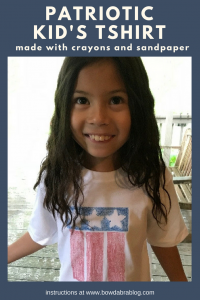
Supplies for Making the Patriotic Tshirt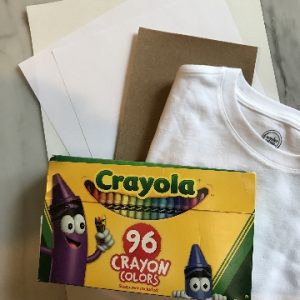

- Tshirt
- 150 grit sandpaper
- Cardstock or cereal box for the star masks
- Three pieces copy paper
- Double sided tape
- Crayons
- Iron
Instructions for Making the Patriotic Tshirt
- Cut sandpaper into three 1½” x 5″ pieces and one 2″ x 5½” piece.
- Cut three stars approximately 1½” wide from the cardstock for masks.
- Color the 1½” x 5″ pieces red, and the 2″ x 5½” piece blue. Press hard to get plenty of crayon laid on the sandpaper.
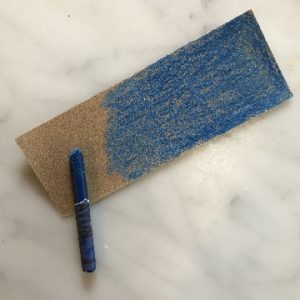
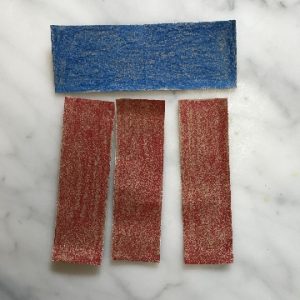
- Place one sheet of copy paper inside the shirt to prevent the design from bleeding through to the back of the shirt.
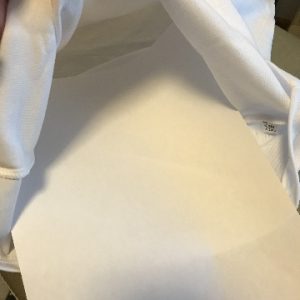
- Position the three-star masks on the blue strip, securing in place with double-sided adhesive.
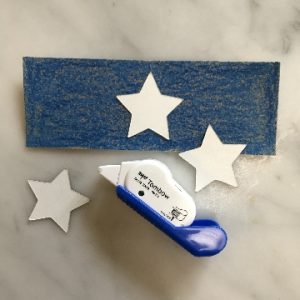
- Carefully place the colored sandpaper pieces face down on the tshirt.
- Cover with one sheet of copy paper.
- With a hot, dry iron (NO steam), firmly press the design onto the shirt. Move the iron with slow, circular motions.
- Before removing the sandpaper, carefully lift a corner of the design to check the transfer. Replace the sandpaper and continue ironing, if necessary.
- Remove the top sheet of copy paper and sandpaper pieces and discard. Cover the design with the remaining piece of copy paper, and iron the design again. This second pressing helps to set the colors, and the copy paper will absorb any residual crayon.
- Celebrate!!
Notes and Variations
- The finer the sandpaper, the more concentrated the color. Experiment with courser grits of sandpaper to produce different textures.
- An older child may be able to draw their own picture, rather than have pieces pre-cut.
- Any writing needs to be mirrored.
- When displaying the flag of the United States, the blue field is always uppermost and to the observer’s left. This means that you may need to mirror the image of the flag.
- Embellish your crayon design with ribbons and rhinestones.
- Wash in cool to warm water with the garment turned inside out. Wash separately for the first washing.
SaveSave